Close-up of crocodile lizard in Vietnam, present since the time of dinosaurs ( Video : Khanh Vi - Vu Thanh Binh).
According to the Vietnam Red List, the crocodile lizard distributed in Vietnam has the scientific name Shinisaurus crocodilurus vietnamensis, recorded in lowland mountain forest areas in the Northeast of Vietnam (Bac Ninh and Quang Ninh) in 2003.

The habitat of crocodile lizards is being fragmented and degraded due to forestry exploitation, coal mining and encroachment on forest land, causing the population of this species in Vietnam to decline significantly.

This colorful-looking reptile is not a crocodile, but a lizard with thick scales and distinctive crocodile-like patterns.
The alligator lizard has a grayish-brown body with a yellow-brown belly, highlighted by red or orange scales running along its flanks. Males are usually larger and more colorful than females, creating a distinctive appearance that is rare in the reptile world .


Alligator lizards live mainly in evergreen forests on rocky or dirt mountains, on tree branches along streams.
This species is agile climber but prefers aquatic environments, its prey being insects, earthworms and spiders.
According to Mr. Nguyen Thanh Dong, a specialist at the Me Linh Biodiversity Center, the center has created a habitat similar to the natural environment to make this animal feel comfortable.

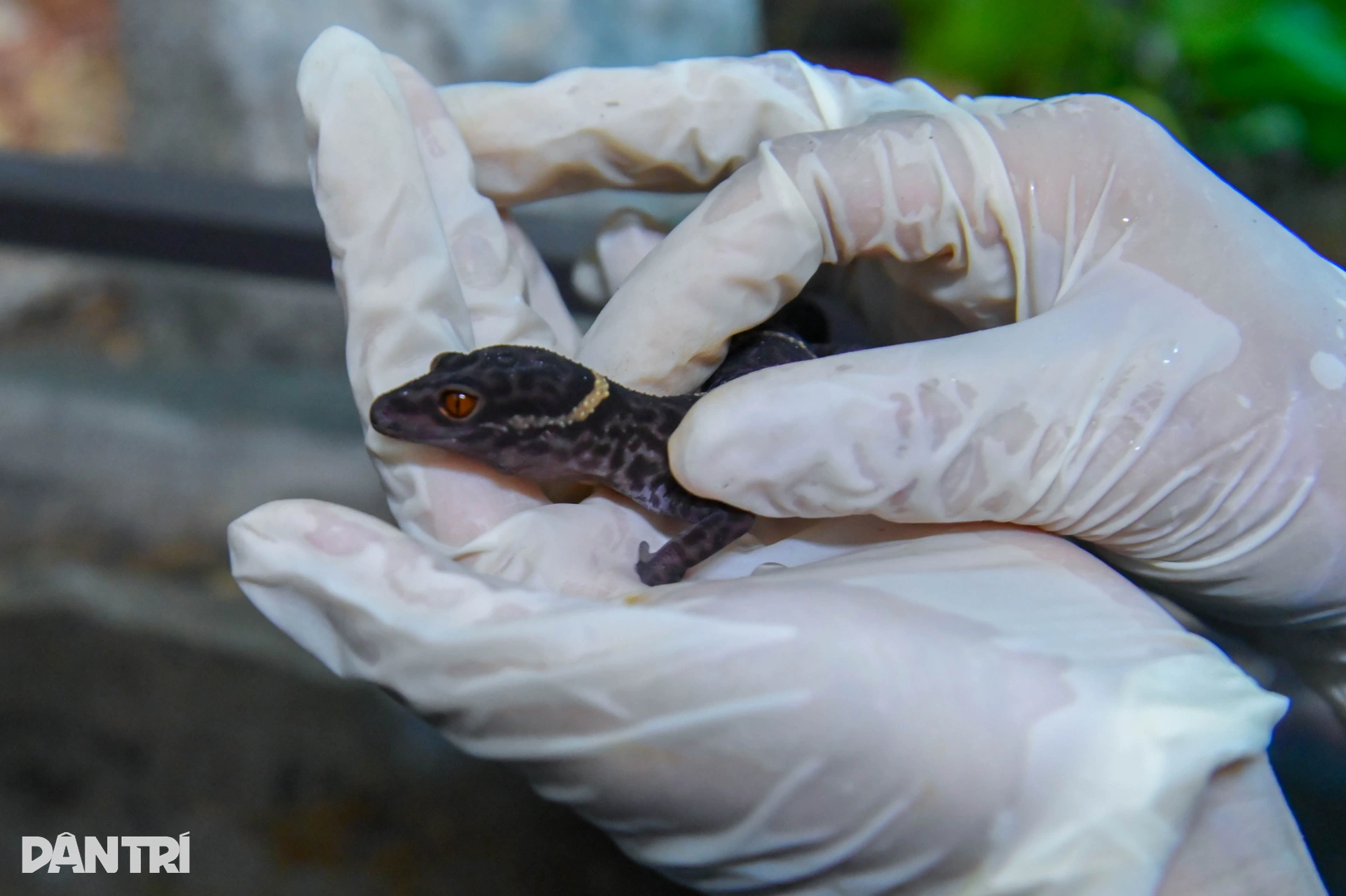
In addition to the rare crocodile lizard, the center also conserves many species of geckos endemic to Vietnam, a group of reptiles facing extinction in the wild.
Huu Lien eyelid gecko was discovered in the limestone mountains of Huu Lung district, Lang Son province, at an altitude of 300-400m.
With a body length of 108-117mm, the back is dark brown, the back of the neck has a cream or yellow-orange stripe, the body and tail have 3-4 more clear stripes, this species has a characteristic and eye-catching appearance in the wild.
This species is at great risk due to its very narrow distribution and illegal hunting for the pet trade.
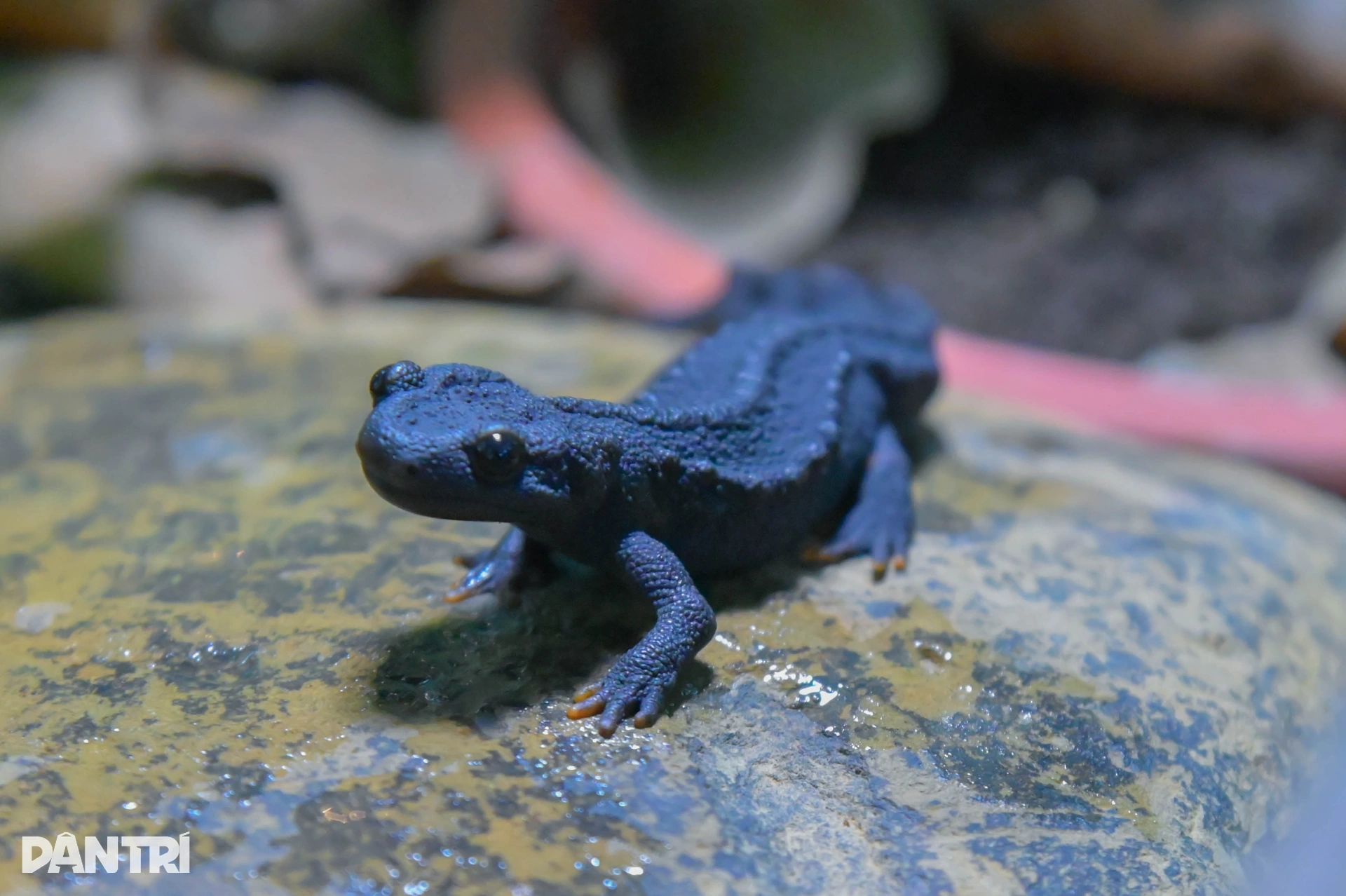
The Vietnamese toadfish (Tylototriton vietnamensis) was first recorded by scientists in 2005. This is an endemic amphibian, living only in humid forests in the northern mountainous region, mainly in Bac Ninh, Quang Ninh and Lang Son.

The Vietnamese moss frog (Theloderma corticale) is considered one of the most unique and strange amphibians in the world.
With rough skin covered in mossy green mixed with brown soil, they almost "disappear" in the damp moss layer where they live.
Thanks to this perfect camouflage ability, moss frogs avoid enemies and adapt to the humid mountain forest environment.
This endemic frog species is currently only recorded in some forests in Northern Vietnam. Although its unique appearance attracts international researchers and collectors of ornamental creatures, the number of moss frogs in the wild has decreased due to habitat loss and illegal hunting.
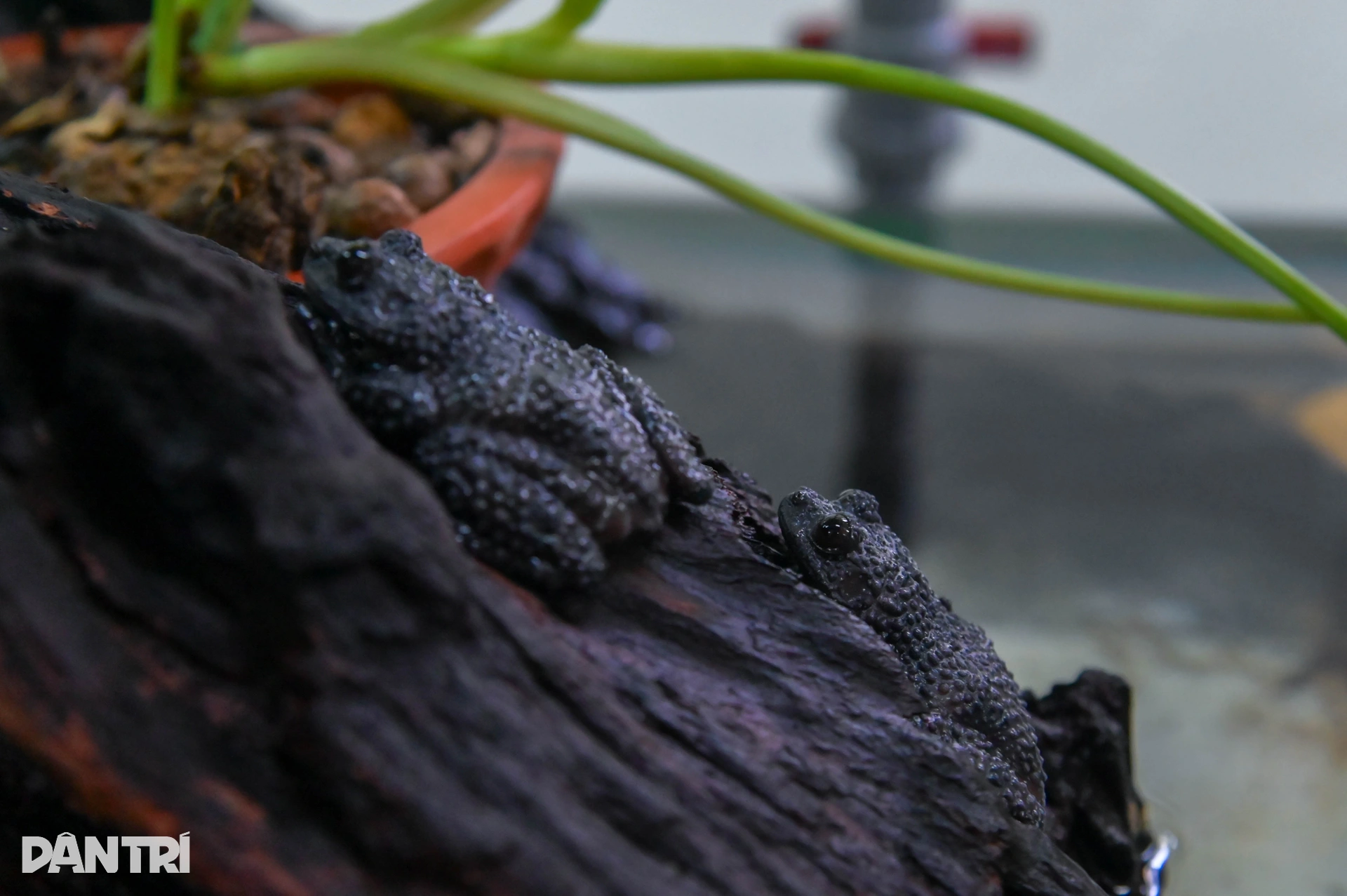
Ryabovi's lumpy tree frog is a species found only in Vietnam, currently only recorded in Quang Ngai province, living mainly in tropical evergreen humid forests on high mountains, where there is high humidity and dense vegetation.
This species is usually recorded in tree hollows containing water, at a height of about 4 m above ground level.

The giant land turtle (Heosemys grandis) is one of the largest freshwater turtles still living in Vietnam, weighing up to 30–35 kg and with a carapace length of up to 40 cm. This species has a characteristic appearance with a high carapace, a dorsal ridge and a clearly serrated posterior margin.
The carapace is usually dark brown, while the plastron is yellow or light brown, with characteristic black streaks.
Large land turtles usually live in ponds, lakes, rivers or swamps with slow-moving water, at various altitudes. Being omnivorous, they use aquatic plants, fruits and small animals for food, especially fond of ripe bananas when kept in captivity. The turtle's breeding season lasts from December to January of the following year.
This is one of nearly 100 turtles of various species being cared for and preserved at the Me Linh Biodiversity Center.
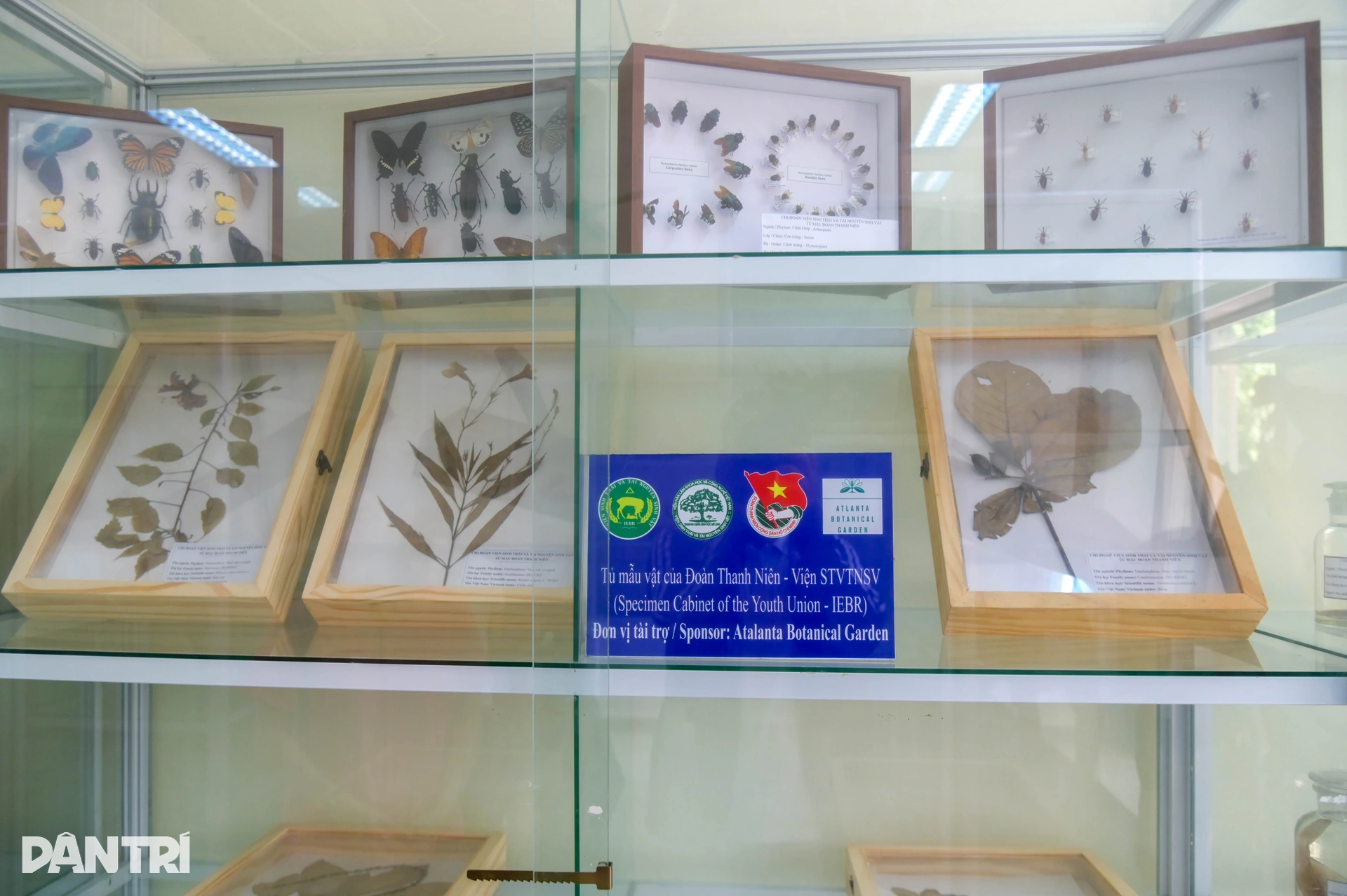

Besides researching and preserving endemic animal species, the center also focuses on building a system of specimen cabinets to serve scientific research.
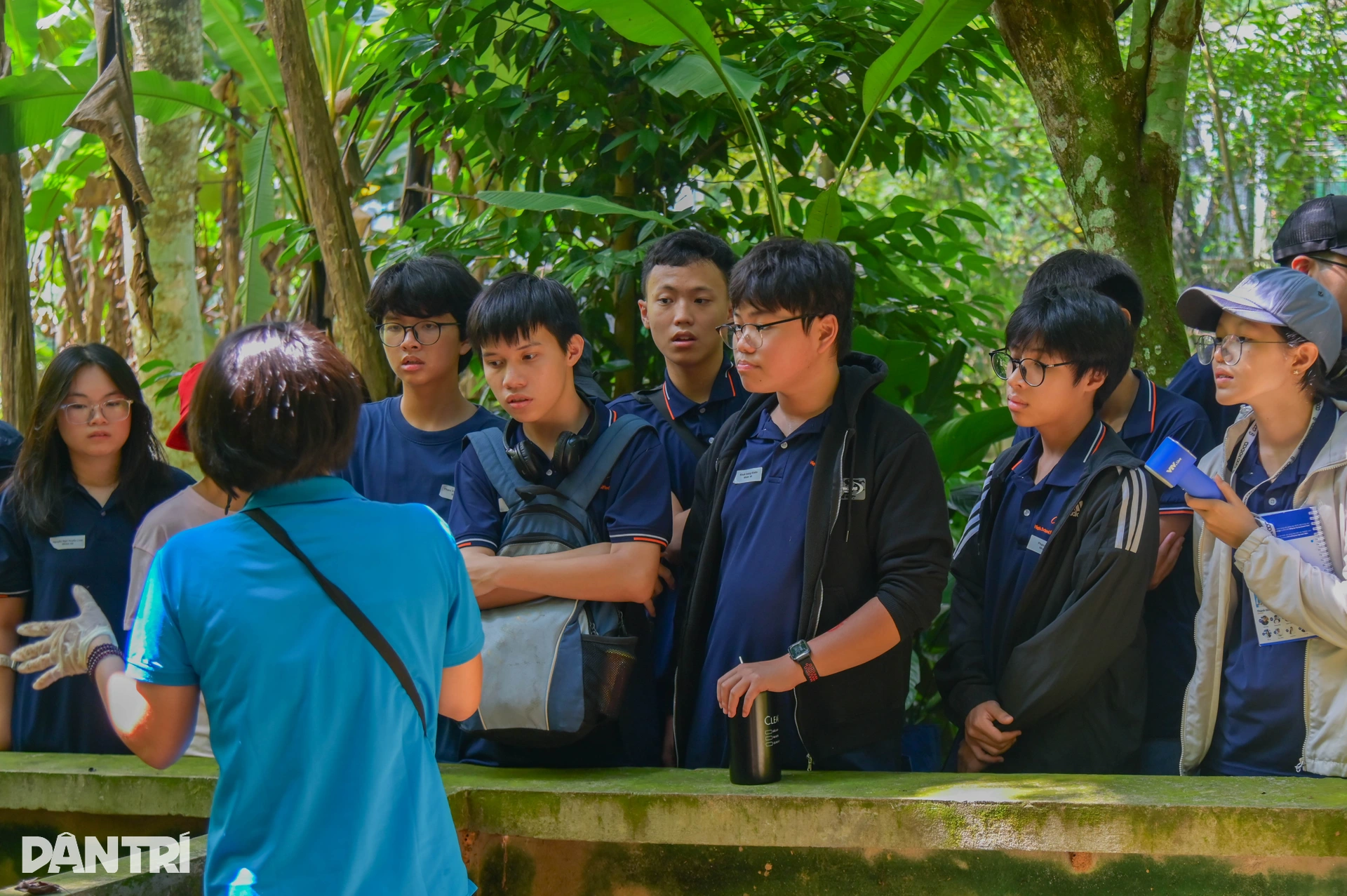
Tours and learning about protected animal species help participants better understand the characteristics and habits of each species, while raising awareness of the meaning and importance of nature conservation.
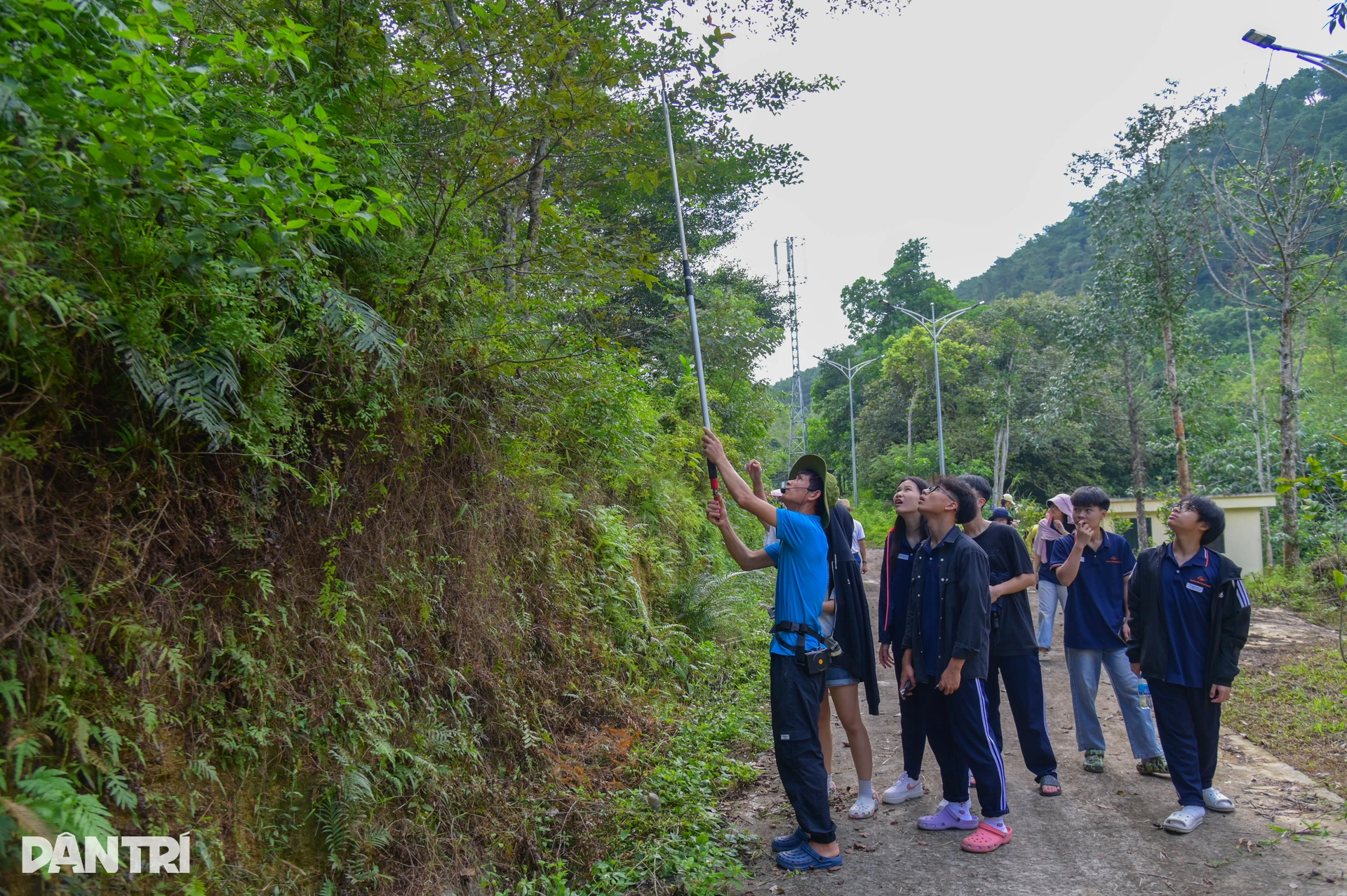
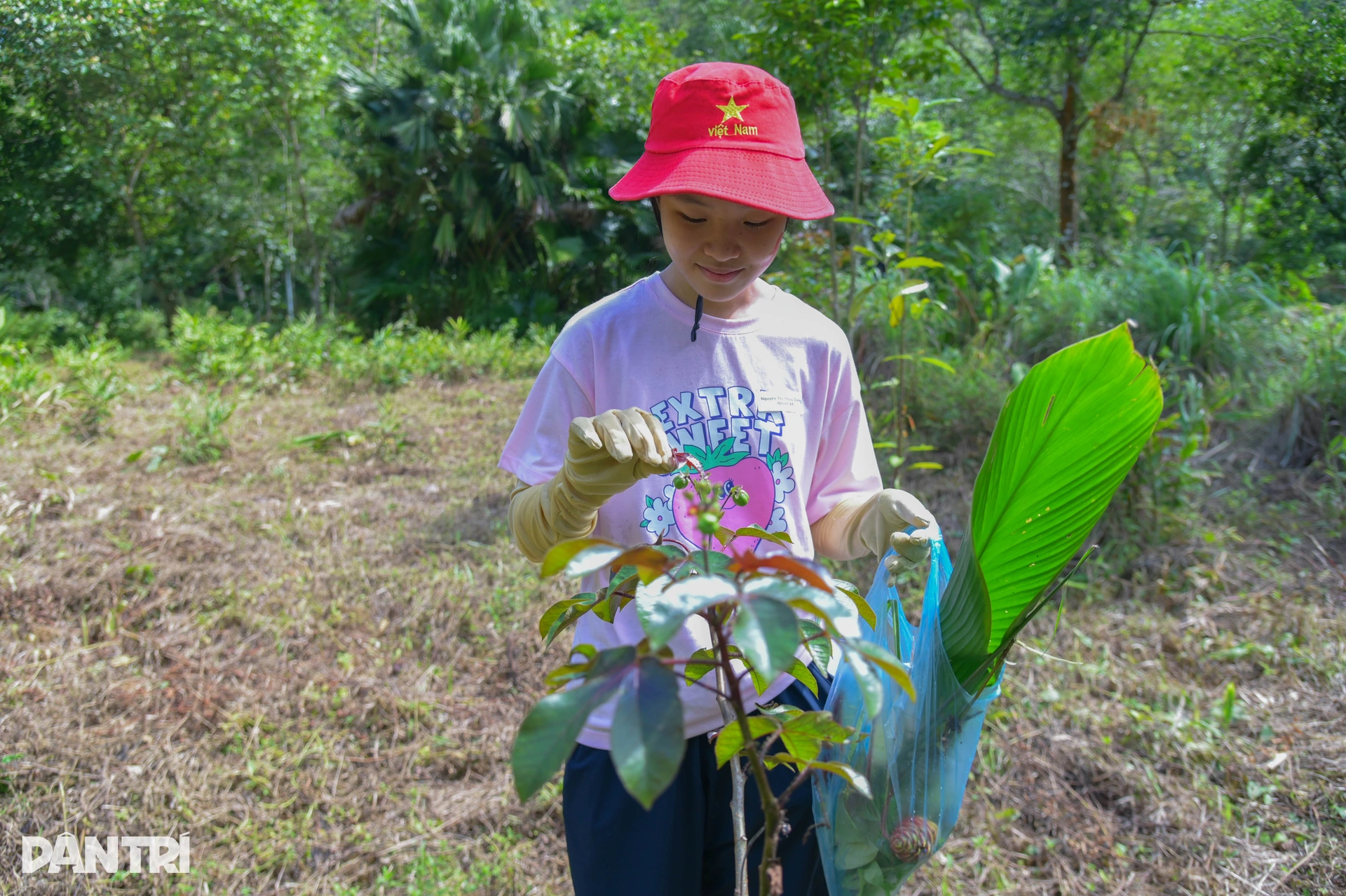
In addition, visitors can also learn about the ecological role of each tree species in the forest ecosystem, and are instructed on how to identify, classify and preserve plant specimens for research and study.
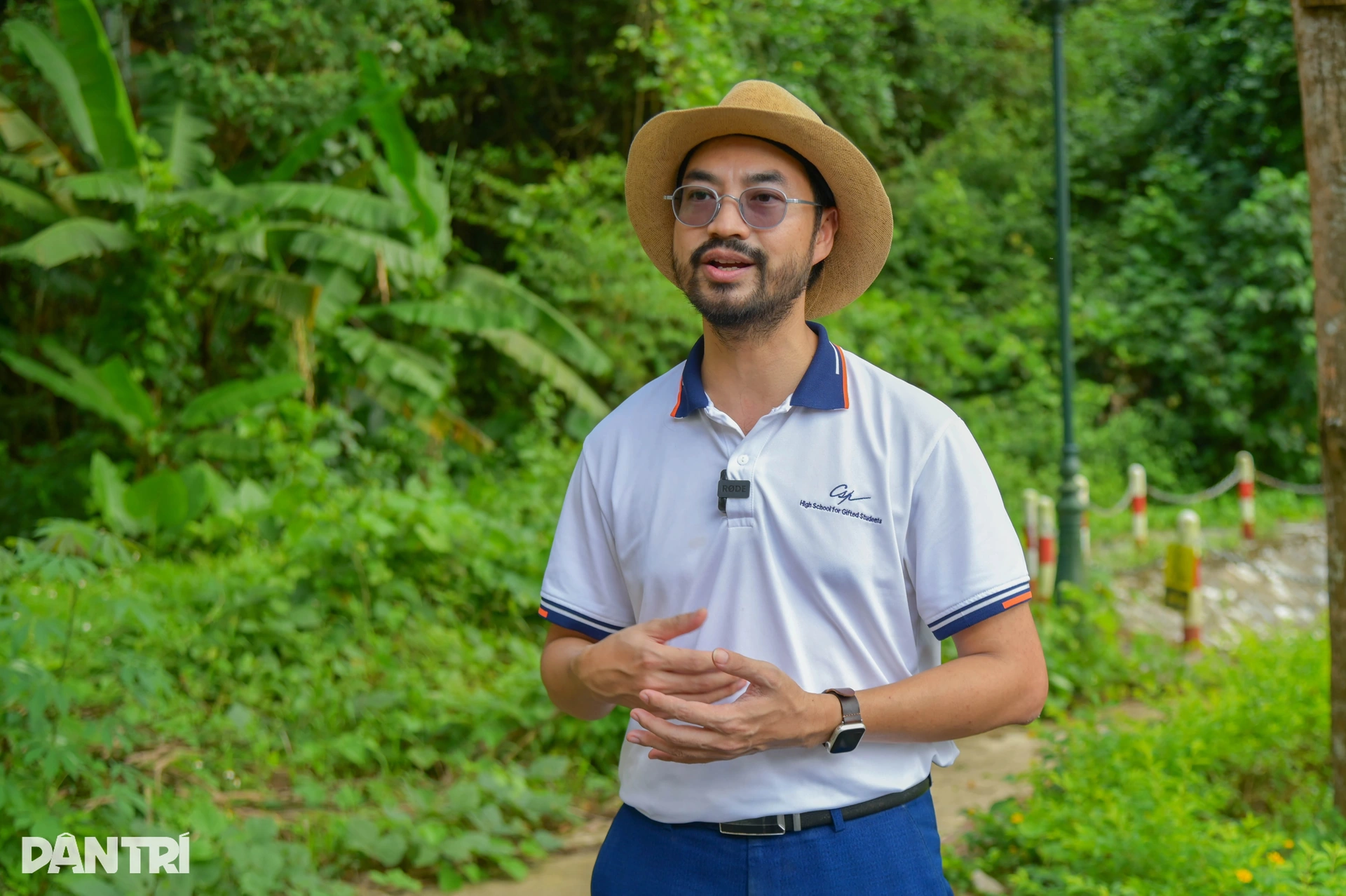
Mr. Nguyen Thanh Cong, homeroom teacher of 10th grade Biology at the University of Education High School for the Gifted, said that the field trip was an extracurricular activity organized by him and parents to help students experience and consolidate their knowledge about biodiversity.
"When children are immersed in nature, observe living creatures with their own eyes and breathe the fresh air of the forest, the knowledge in books will become more vivid than ever," Mr. Cong shared.
Performed by: Vu Thanh Binh
Dantri.com.vn
Source: https://dantri.com.vn/khoa-hoc/can-canh-loai-than-lan-ca-sau-o-viet-nam-co-mat-tu-thoi-khung-long-20251031170831231.htm



![[Photo] Da Nang: Hundreds of people join hands to clean up a vital tourist route after storm No. 13](https://vphoto.vietnam.vn/thumb/1200x675/vietnam/resource/IMAGE/2025/11/07/1762491638903_image-3-1353-jpg.webp)




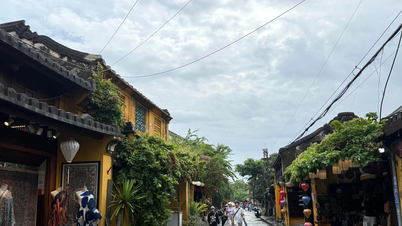












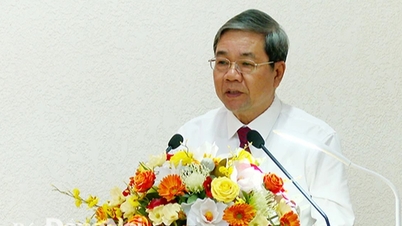



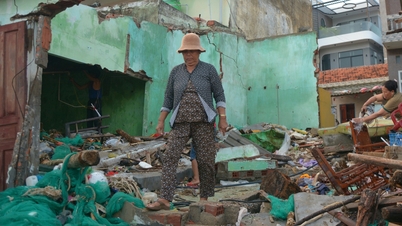
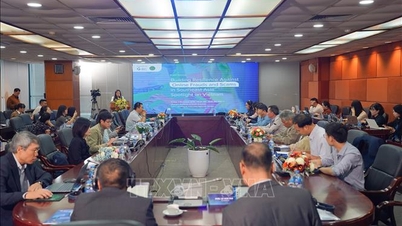



















































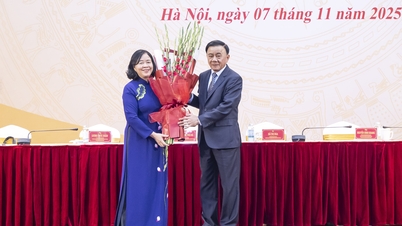




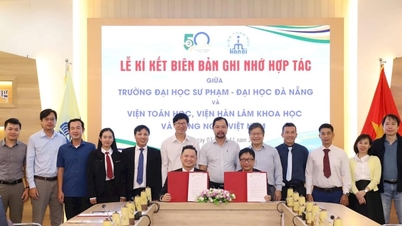

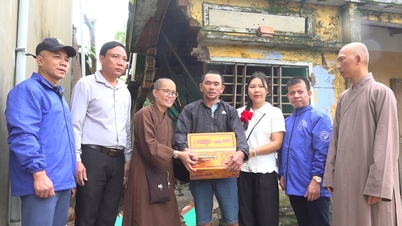
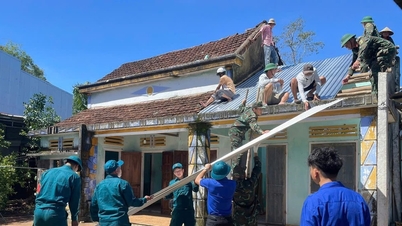


















Comment (0)